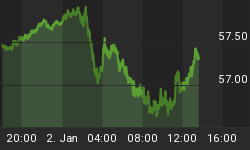For the bulls, the events of the past several days have marked a major turning point for the U.S. equity market.
Share prices staged their first weekly gain in a month. The Federal Reserve pulled out all stops to save the banking system. Financial shares bounced hard. And inflation fears eased as commodity prices fell back to earth.
In other words, the ducks are all lined: it's time to buy.
Upon closer inspection, however, recent developments are less than reassuring. History suggests, for example, that major upside reversals are rarely anticipated before the fact -- or at the time. Often, they are not even acknowledged for days or months after a rally has begun.
Yet there was plenty of talk this week about "bottom-fishing," "buying opportunities," and the likelihood of a bear market bounce in share prices. Analyst Richard Bove proclaimed that "the financial crisis was over." A Merrill Lynch survey revealed that money managers were itching to buy "undervalued" equities.
Not exactly signs of excessive pessimism.
There hasn't been much "capitulation" by weak hands, either. Apart from the quick downdraft that occurred in mid-January, apparently spurred by hedge fund selling, the decline from the October record peak has been fairly orderly.
Yet the absence of a washout doesn't seem to phase the bulls. One pundit even went so far as to say that a lack of panic-type selling like we saw last Monday was "another sign that we could be near a bottom." That takes the cake as far as bullish rationalizations go.
What about the fact that financials were at the head of the pack during this past week's recovery? Was it because investors were taking advantage of what Bove characterized as a "once in a generation opportunity to buy," or did it have everything to do with the fact that the most heavily-shorted shares were being squeezed the hardest?
Otherwise, is it actually good news that Fannie Mae and Freddie Mac can now operate with even smaller capital cushions than they had before? Or that curious financial footwork helped some brokers to beat Street estimates, even though their outlooks remained dicey? Or that the Bear Stearns "rescue" could only be solved with the help of $30 billion in non-recourse Federal Reserve loans?
Many bulls also took comfort from the sharp decline in commodity prices, which was seen as a sign that inflation was no longer a concern. Reports indicate, however, that "de-leveraging" by hedge funds and proprietary trading desks played a major role in the unwinding. Instead of being good news, the slump probably means that bursting-credit-bubble deflation is gathering force, which is bad news for share prices.
Of course, what really got the bullish juices flowing recently are the actions of the Fed. From helping to orchestrate a Bear Stearns "rescue," to cutting the discount and federal funds rates, to opening up new sources of liquidity for an ever-widening array of institutions, Bernanke & Co. are doing anything and everything they can to try and save the day.
Unfortunately, there's just one thing missing: good results.
"'He has taken extraordinary measures, things that we haven't seen since the Great Depression,' said former Fed vice chairman Alan Blinder, a Princeton University professor," in a Bloomberg report. "'He's working overtime, literally and figuratively, to get this panic under control. But so far, it's not under control.'"
Arguably, the Federal Reserve is actually making things worse. For instance, rather than bolstering confidence, the central bank's seemingly reactive and seat-of-the-pants, secretive, and unusually forceful response suggests that policymakers are desperate and behind the curve.
In addition, new liquidity facilities that allow a broad range of unnamed counterparties to swap u nknown amounts of mis-rated and overpriced mortgage-backed securities for U.S. government bonds only adds to uncertainty about valuations and the extent of the problems that like ahead.
Finally, people are being led to believe that things are under control, so instead of doing whatever is necessary to prepare for the worst, they are setting themselves up for an even bigger blindsiding than before.
In sum, while bulls believe that share prices are poised to reverse and move sharply higher, the facts suggest otherwise. In reality, what they are seeing is the set-up for the next leg down. Some might call that a continuation point.
















